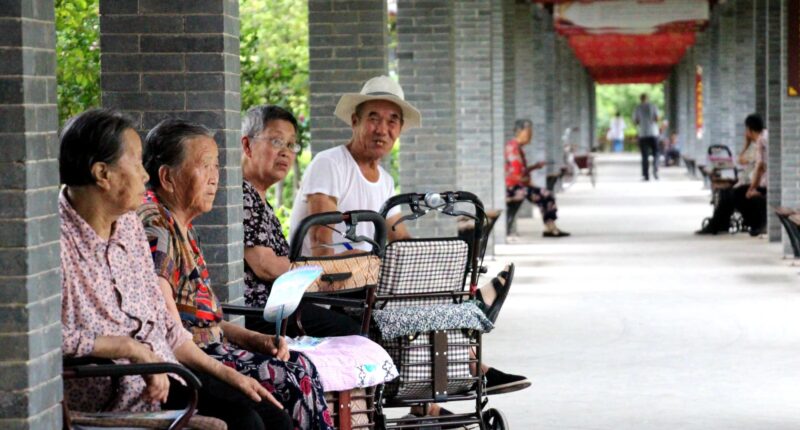Share this @internewscast.com
BINZHOU, CHINA – JULY 11, 2021 – Senior citizens rest in Binzhou, East China’s Shandong Province, July 11, 2021.
Cfoto | Future Publishing | Getty Images
China is planning to offer subsidy coupons to seniors in a rare use of direct fiscal support as Beijing seeks to ease the financial strain on its aging population and drive consumption of elderly-care services.
The allowances will be paid monthly in the form of electronic coupons to cover part of the costs for seniors’ care services, according to a joint statement issued by the ministry of civil affairs and ministry of finance on Wednesday.
Chinese policymakers have avoided direct cash handouts similar to what the U.S. and Hong Kong offered during the pandemic to stimulate spending, even as they step up efforts to support employment and improve social welfare.
“The financial burden that elderly care generates for Chinse households … is one of major current constraints to reducing precautionary savings and boosting domestic consumption,” said Alfredo Montufar-Helu, a Beijing-based advisor to multinational enterprises.
Seniors will be assessed for their physical disability, and only those evaluated as “moderately, severely or completely disabled” will be allowed to claim such subsidies, according to the official statement.
The allowances are currently set between 500 yuan and 800 yuan a month and can be used to pay for a portion of the costs for certain senior-care services, such as meal and bathing assistance, rehabilitation and day care.
Details of the plan may be further “optimized” as authorities will run a pilot in select cities this month before a nationwide roll-out later this year. The scheme will last for 12 months.
The measures could incentivize the adoption of such senior care services and ease the “hefty elderly care burden” for family members, said Tianchen Xu, senior economist at Economist Intelligence Unit.
Echoing that view, Lynn Song, chief economist for Greater China at ING, said that while “strengthening of the social safety net has been one of the main goals in order to better unlock consumption, these measures can be interpreted as steps in this direction.”
As China’s population ages and middle-class consumers facing job uncertainty scale back spending, the so-called silver economy — a sector that provides goods and services for people over 50 — has been on the rise, with more businesses targeting seniors who have accumulated sufficient retirement funds.
The latest round of subsidies is unlikely to spark a significant pickup in demand for elderly care services, which remains heavily dependent on a broader recovery in consumer sentiment, Montufar-Helu said.
“What we would hope to see is an increase in discretionary spending by the elderly,” Montufar-Helu said, such as tourism.
That makes it critical for authorities to press ahead with reforms that tackle the deeper structural imbalances in supply and demand, Montufar-Helu noted.
The fiscal aid will be primarily funded by the central government, with local authorities contributing a smaller share, according to the statement Wednesday.

Economists have ramped up calls for Beijing to prioritize policies aimed at strengthening the country’s social safety net to tackle the aging population, high youth jobless rate and tepid domestic consumption.
“Mounting demographic and economic pressures are forcing Beijing to highlight the social policy agenda in the upcoming 15th five-year plan,” Eurasia Group said in a note Thursday.
“Bolstering the social safety net, especially through changes to pensions and healthcare, is high on the agenda to adapt to a rapidly graying society,” Eurasia Group said in a note Thursday.
About 22% of China’s population was aged 60 or older at the end of 2024, the statement said, up from 18.7% in 2020. The population aged 65 years and above in China reached 216.8 million in 2023, accounting for 15% of the total population.









